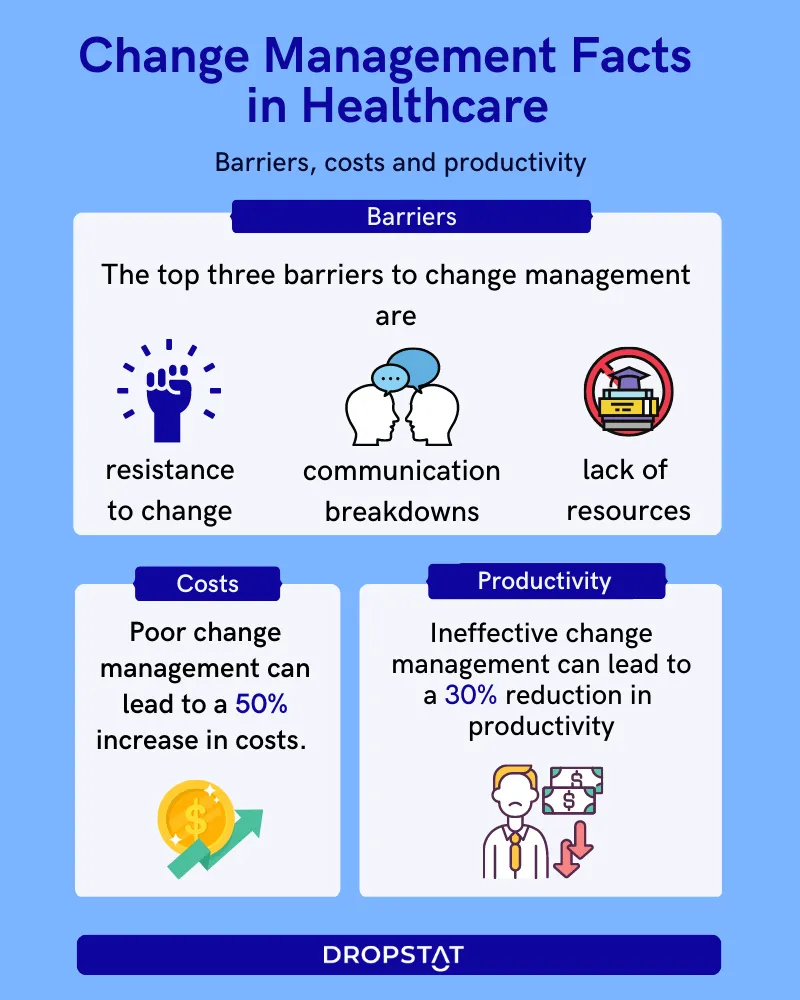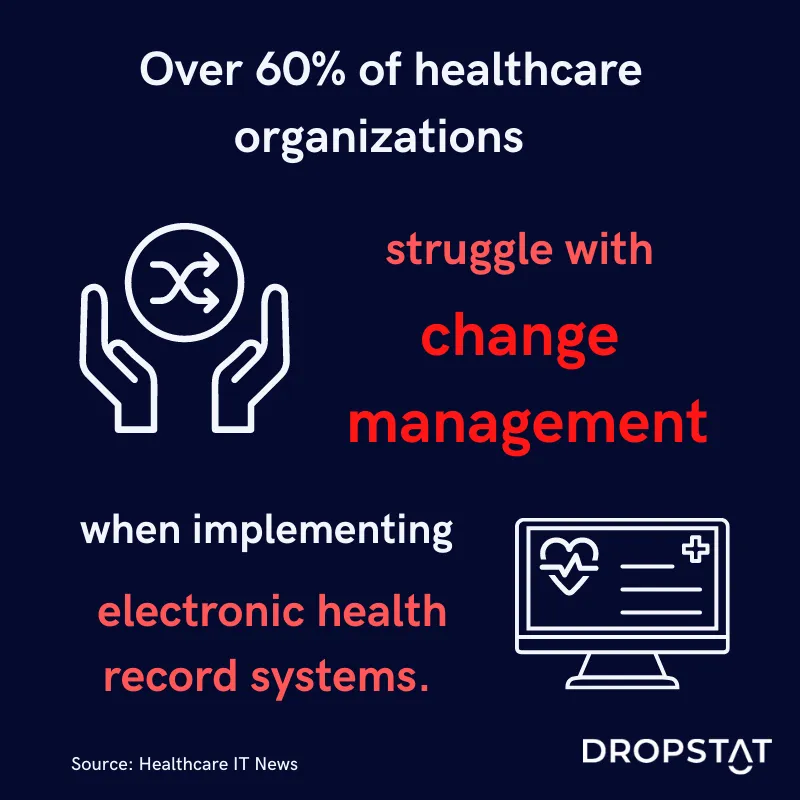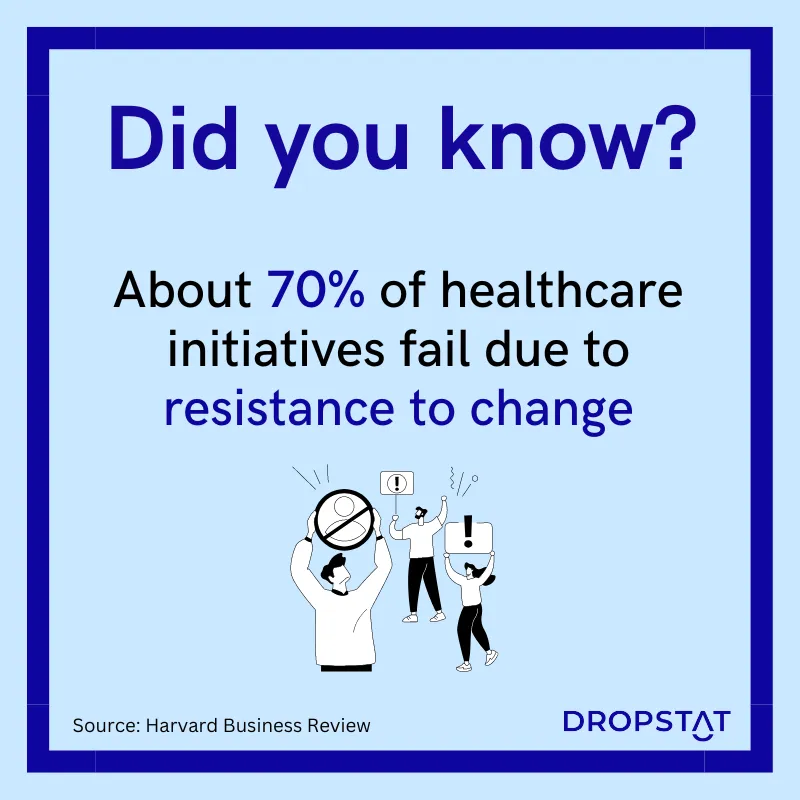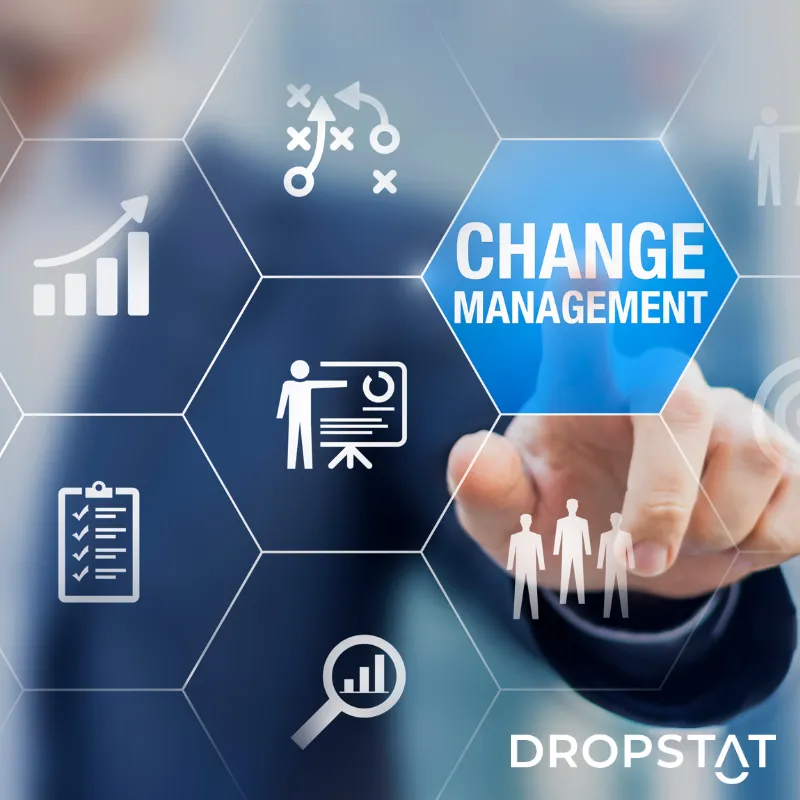What is change management in healthcare?
Change management in healthcare is a way to reduce and manage resistance to evolving aspects of the healthcare systems when implementing process, technology, or organizational changes to meet patient demands and deliver high-quality care.
Instituting a pragmatic approach to change management requires that your institution determines the processes that are in need of change, generate plans aimed at tackling those issues, institute targeted plans, and evaluate the new procedures. Revisions to institutional policies, technology, facility culture, and practices are crucial to implementing lasting change and achieving positive health outcomes.
Keeping track of the changing demands across all departments and implementing new practices that improve current processes can help your facility adapt quickly while minimizing employee concerns.
Importance of change management in healthcare
The strategies involved in effective change management reduce wasted resources and allow healthcare facilities to provide the best possible care while meeting the expectations of their stakeholders. Additionally, organizational change supports strategic planning to carry out specific goals and advance the institution’s mission. Some of the major benefits of healthcare change management include:
- reducing risk
- increasing staff engagement
- ensuring efficient operations
- improving patient care
Reducing facility risk
Healthcare institutions must comply with many regulatory standards to prioritize patient safety and positive clinical outcomes. Therefore, change initiatives must consider the effects of new practices and determine the potential threats to patient care. This method of managing change allows healthcare professionals to implement change that adjusts to new demands through a supervised approach.
Increasing staff engagement
Incorporating your care teams into the planning and implementation of change management processes positions your facility for success. This strategy enables management to enact new procedures that are most likely to deliver the desired outcome. Additionally, the reliance on your healthcare staff allows for a greater understanding of the organizational changes and reduces employee resistance. Furthermore, staff engagement also supports employee retention, which leads to stronger teams and a more effective healthcare delivery structure.

Ensuring efficient operations
Determining which aspects of your facility are experiencing recurring issues empowers your management team to find methods that target those specific challenges. Utilizing healthcare data analytics is one method that can provide insight into the particular obstacles for your facility and can contribute to a more successful change management strategy. Ultimately, this can reduce healthcare costs and improve care coordination among providers, which will promote positive patient outcomes and higher patient satisfaction ratings.
Improving patient care
The constantly changing patient care needs within healthcare organizations require extreme attention to potential gaps in healthcare delivery as well as changing policies and regulations. This ensures that your institution remains responsive to patients’ demands by prioritizing efforts that support positive organizational change. Utilizing new technology and providing healthcare professionals with adequate training also work to make staff feel prepared and confident in the care that they deliver.
Challenges of managing change in healthcare
While the benefits of change management are evident, the challenges and hesitancy associated with organizational change pose challenges to successful implementation. A few of the main issues include:
- A lack of effective communication
- Employee resistance
- Compliance with regulatory standards
- Resource deficits
Lack of communication
When employees feel as though they lack transparency from management, they are less likely to support new systems. This can also lead to confusion and negative feelings toward your healthcare institution as well as difficulty with the change process.
Employee resistance
Your healthcare staff is an integral part of successful facility operations, so it is crucial to ensure that your care teams support the new change initiatives. Resistance to change may stem from a lack of trust in higher management, the perception that the changes will lead to negative repercussions, or loss of control over existing procedures.
Compliance with regulatory standards
Healthcare facilities must abide by regulatory standards affecting numerous departments and operational goals. These standards add to the complexity of healthcare change management and can increase costs.
Resource deficits
Attempting to institute change without the right resources will make it much more difficult to carry out effective change initiatives. If your institution is lacking in certain resources, which may include time, finances, or personnel, your facility is more likely to experience higher failure rates in regard to the new changes.

Popular change management models in Healthcare
Kotter’s change model
Kotter’s 8-step model of change creates a structured process that includes creating a sense of urgency, forming a powerful coalition, creating a vision for change, communicating the vision, removing obstacles, creating short-term wins, building upon the change, and integrating the changes into the corporate environment. One significant advantage of this model is that it not only considers the logistics of change in practice but also the institution’s culture and the ways in which it can manage change.
Bridge’s transition model
Organizational change management in healthcare has numerous effects on the cultural norms of an institution and on the individuals within the organization. Given that change management in healthcare is a complex process, it is important that each healthcare organization attempts to institute adjustments in a reassuring manner.
Bridge’s transition model emphasizes the human aspect of change management through three stages. The first stage of this model is known as “endings,” the second is referred to as “the neutral zone,” and the last stage is named “new beginnings.” The initial stage of “endings” asks the group to accept that the current practices will need to be revised. Next, “the neutral zone” is marked by confusion and potential hesitancy toward the upcoming change. Lastly, “new beginnings” is the time when teams explore the change while they learn to accept the new norm. Each stage expands on the natural progression of transition that employees experience in order to implement change productively.
Lewin’s change model
Lewin’s change model has three separate stages, which are referred to as unfreezing, freezing, and refreezing. Unfreezing, the first stage, expands on how to prepare employees and stakeholders by motivating organizations to embrace and support the change. The second part of this model requires implementing the change by encouraging active employee involvement in the process, elucidating positive achievements, and prioritizing continuous communication across all teams. Lastly, the third and final stage, known as “refreeze,” entails cementing the new systems into healthcare organizations to create new cultural norms. Otherwise, healthcare organizations fail to enact long-term processes that support positive outcomes.

Digital adoption within healthcare change management
Digital software systems and technology play a key role in healthcare change management by streamlining and automating service delivery and decision-making. The increased digitalization of healthcare processes also enables employees to focus on other, more complex projects while reducing costs and increasing efficiency. Additionally, technology can promote greater communication among both internal and external teams, which increases care coordination and patient safety and promotes positive patient outcomes.
Data analysis and predictive analytics in healthcare also provide insights into the most prevalent institutional challenges. This awareness enables providers and care teams to implement evidence-based interventions and partake in more precise decision-making, which would effectively target such issues and improve care quality.
How Dropstat supports change management in healthcare
Not only does Dropstat use scheduling software and predictive analytics as tools to identify and reduce common healthcare challenges, but it also provides facilities with hyper-care.
Dropstat’s committed project management team offers two months of specialized support for your facility, which mitigates the potential challenges that occur throughout the change management process. For example, regulatory compliance, such as mandated staffing ratios, may pose challenges to your healthcare operations, thereby threatening patient safety and care. However, Dropstat’s interface easily flags shifts that are either over or understaffed in order to achieve optimal staffing levels among all departments and disciplines.







